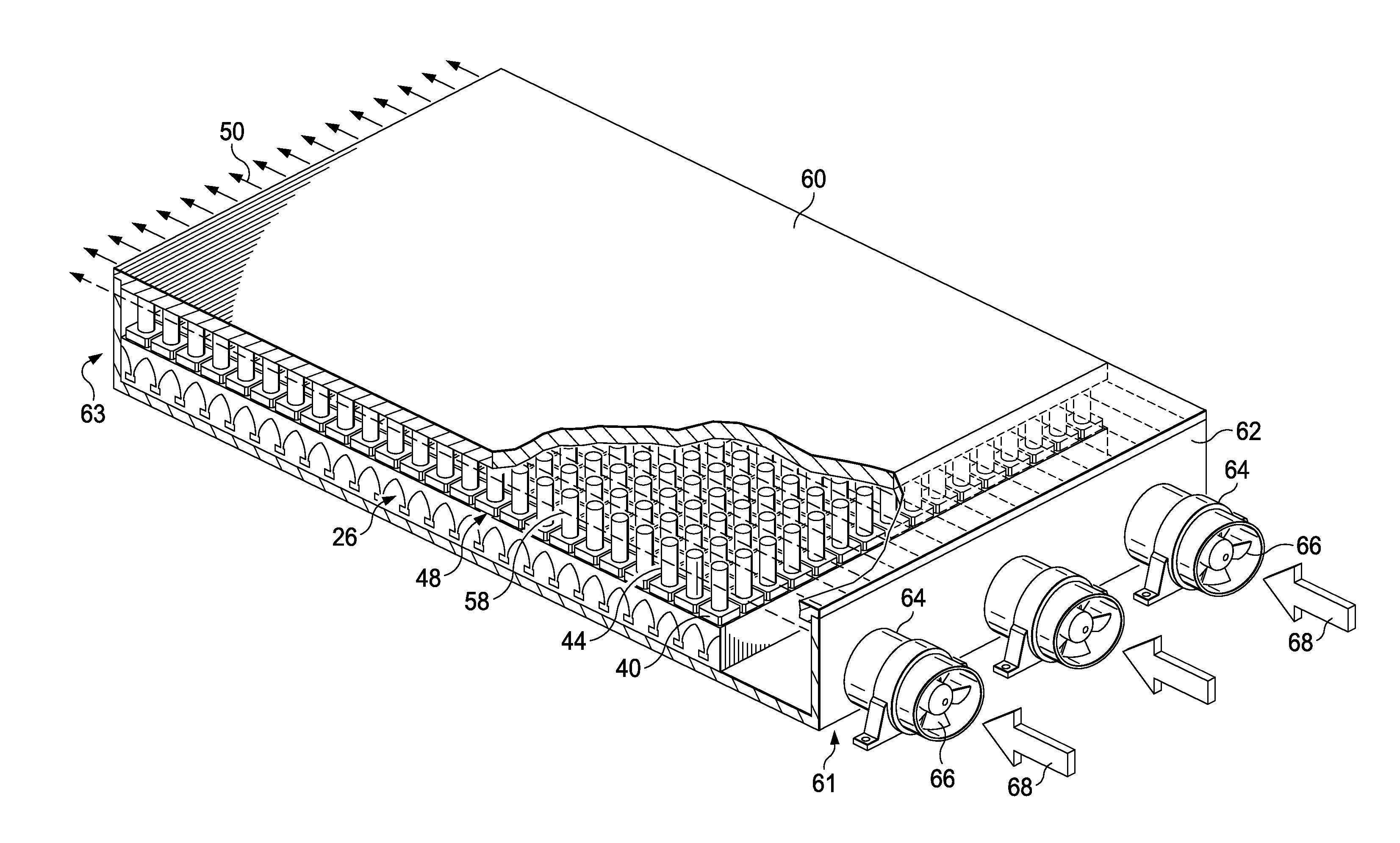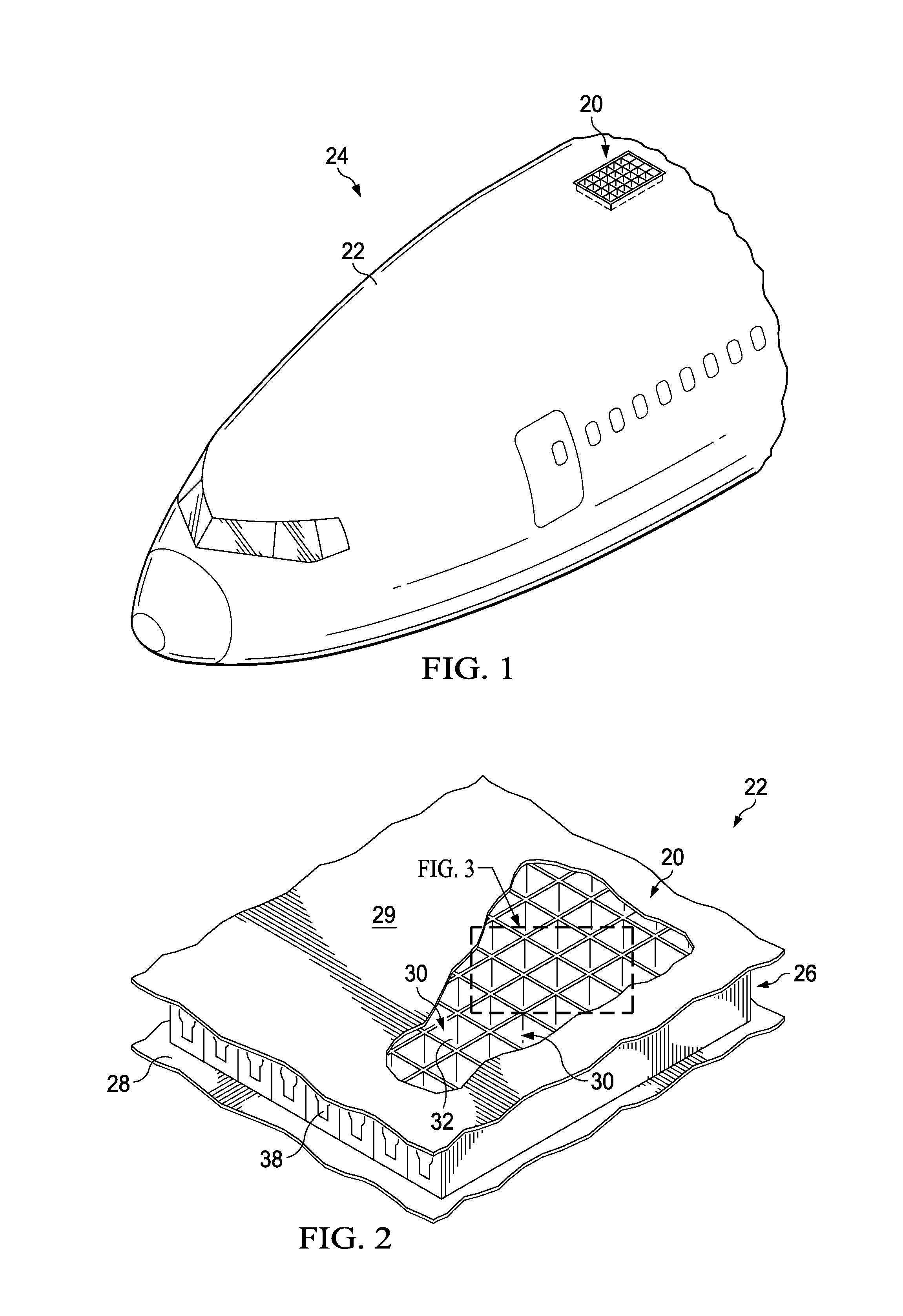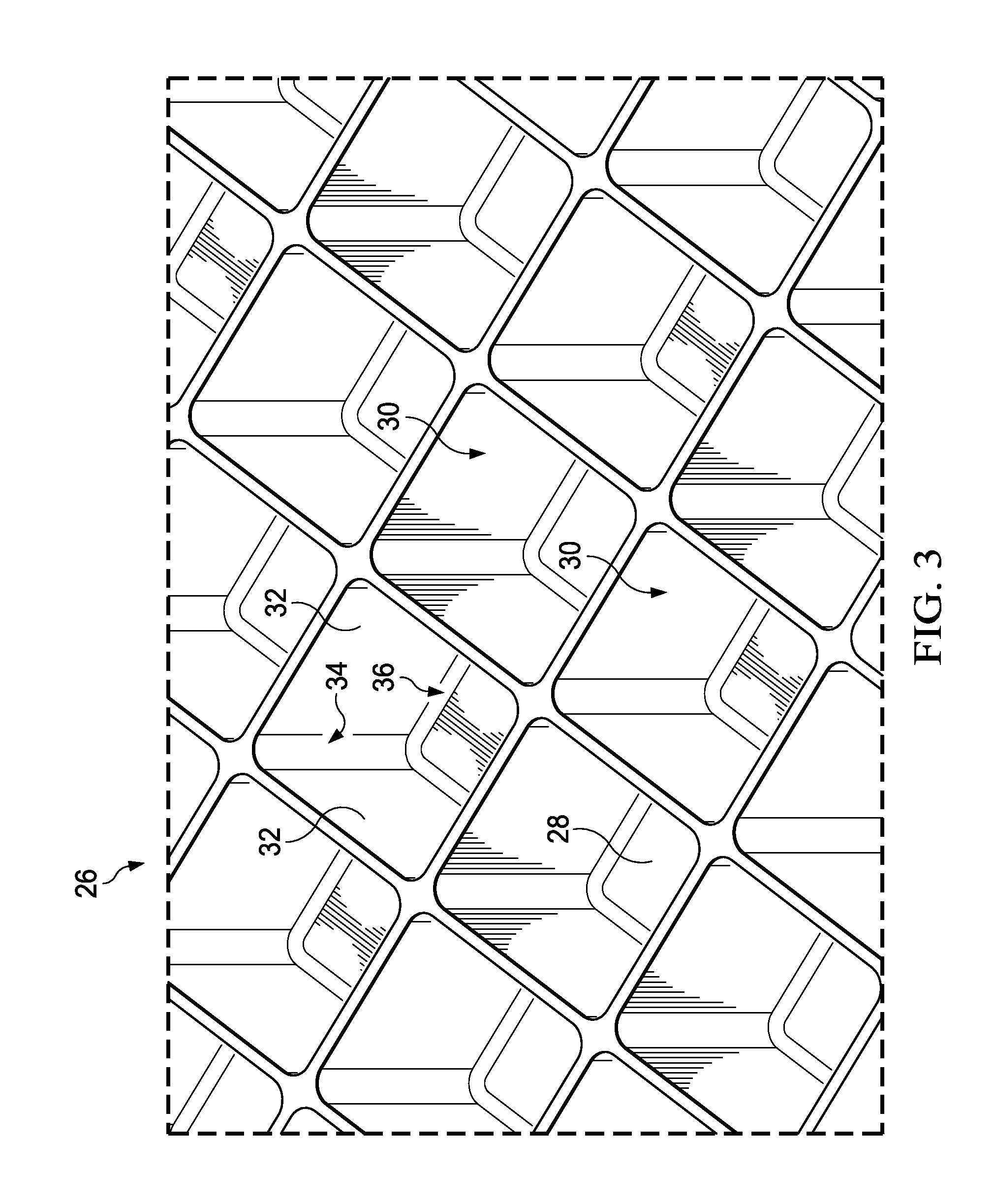Thermal Curing of Cell-Based Structural Arrays
a technology of cell-based arrays and structural arrays, which is applied in the manufacture and reworking of cell-based arrays, can solve the problems of uneven heating of individual cells, non-uniform heat conduction, and internal sections of cell-based arrays heating up more slowly, and achieves easy manufacturing, reduced fabrication and rework costs, and high yield.
- Summary
- Abstract
- Description
- Claims
- Application Information
AI Technical Summary
Benefits of technology
Problems solved by technology
Method used
Image
Examples
Embodiment Construction
[0029]The disclosed embodiments may be employed to fabricate or rework composite structures that incorporate cell-based arrays, sometimes referred to herein as cell-based structural arrays. For example, referring to FIG. 1, a structural RF (radio frequency) aperture 20 used for communication may be integrated into the skin 22 of the aircraft fuselage 24. As shown in FIG. 2, the RF structural aperture 20 comprises an array 26 of cells 30 sandwiched between inner and outer facesheet 28, 29 to form a composite sandwich structure. Although the structural RF aperture 20 is shown as being located in the aircraft fuselage 24, it may be located in other areas of the aircraft, including but not limited to wings, cowls, stabilizers, doors, etc. Moreover, although an aircraft application is illustrated, the cell-based structural array may be incorporated into structures used in other applications, such as, for example and without limitation, land or sea vehicles satellites, etc.
[0030]Referring...
PUM
| Property | Measurement | Unit |
|---|---|---|
| structure | aaaaa | aaaaa |
| thermally conductive | aaaaa | aaaaa |
| thermal conductivity | aaaaa | aaaaa |
Abstract
Description
Claims
Application Information
 Login to View More
Login to View More - R&D
- Intellectual Property
- Life Sciences
- Materials
- Tech Scout
- Unparalleled Data Quality
- Higher Quality Content
- 60% Fewer Hallucinations
Browse by: Latest US Patents, China's latest patents, Technical Efficacy Thesaurus, Application Domain, Technology Topic, Popular Technical Reports.
© 2025 PatSnap. All rights reserved.Legal|Privacy policy|Modern Slavery Act Transparency Statement|Sitemap|About US| Contact US: help@patsnap.com



